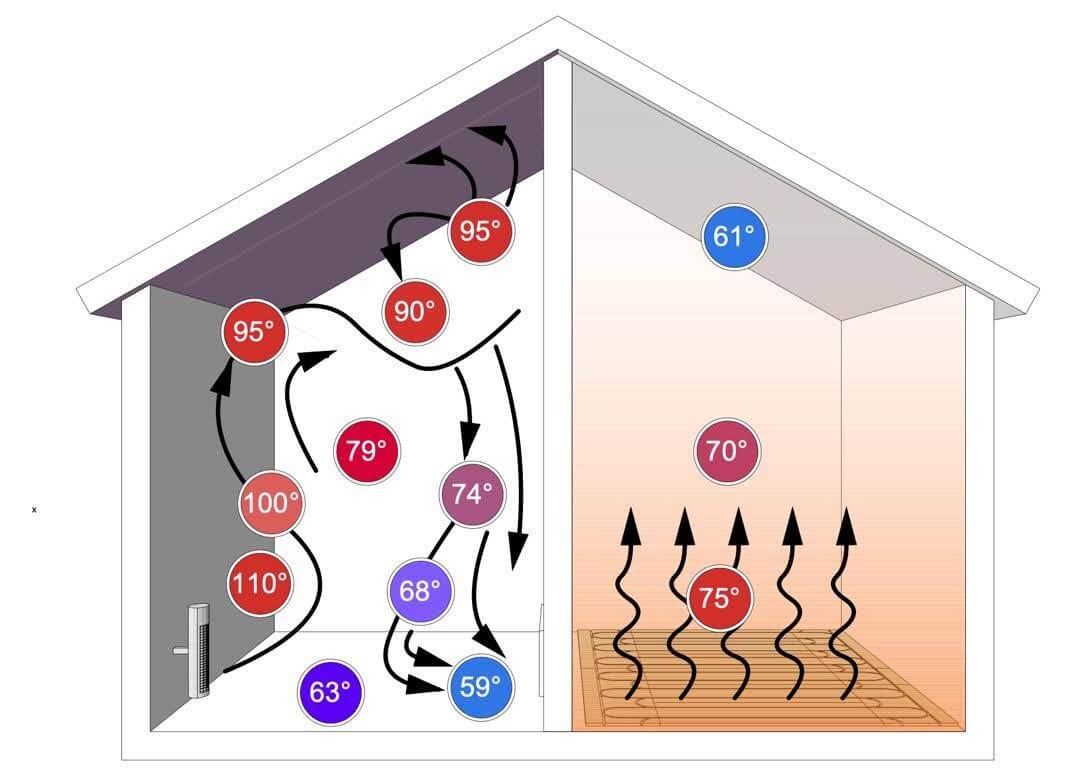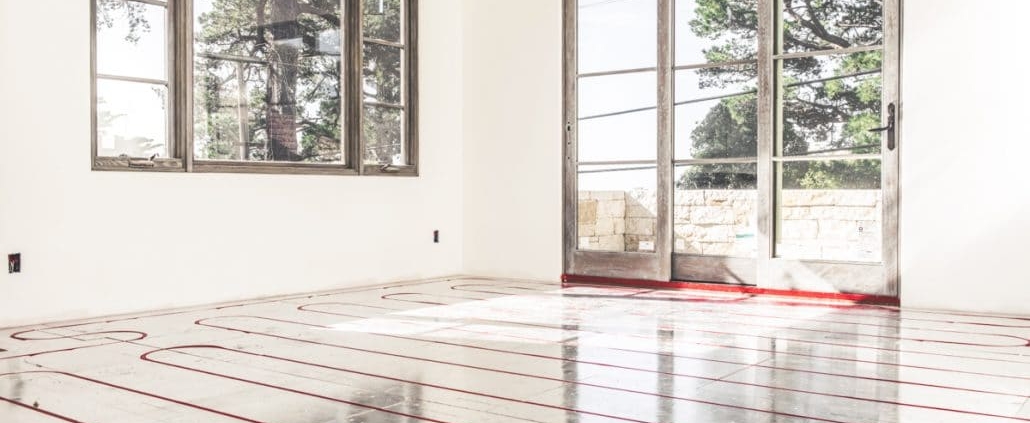Radiant Floor Heating: Is It the Right Choice for Your Home?
Introduction
When it comes to home comfort, nothing is more luxurious than standing on a toasty floor when the morning air is cold. Radiant floor heating, one of the new home upgrades gaining increasing popularity, is where it’s at.
Is the investment justified, though? How does the process work and what’s involved? Detailed explanations of radiant heating’s definition, function, and applicability as a home improvement, especially if you’re installing radiant floor heating in the existing home, are contained in this blog.
What Is Radiant Heating?
Radiant heating is a home heating system that works by warming up the surfaces of a room, most often the floor, instead of circulating hot air through vents.
Rather than using vents to blow hot air into a room, radiant heating warms the surfaces throughout the space, usually the floor. It directly heats the objects and people in the space, as opposed to heating the air first, like in traditional forced-air systems. The result? a gentle, consistent warmth that eliminates cold spots and produces a comfortable ambiance throughout your home.
Homeowners who want to modernize their heating without giving up comfort or aesthetics will be highly tempted by this system. Also, radiant floor heating can be an unobtrusive and efficient means of enhancing overall warmth in a pre-existing dwelling without the noise or airflow disruption of duct-based systems, a key benefit when installing radiant floor heating in the existing home.

How Installing Radiant Floor Heating in the Existing Home Works?
Radiant heat operates by transmitting heat by means of either electric heating cables buried under the floor or hot water tubes. Radiant heat spreads warmth through the space utilizing electric heating cables buried under the floor or hot water tubes. When heated, heat migrates slowly and evenly upwards to warm the walls, the furniture, and even your toes.
If you’re thinking about installing radiant floor heating in your existing home, select the most appropriate type of radiant floor heat for your area.
Types of Radiant Heating Systems
When thinking of installing radiant floor heating in a current home, it is important to know about the various systems that can be installed. Let us discuss the major types:
a. Radiant Heat from Hydronics
The most typical form of radiant heat is hydronic systems, which are especially favored for their efficiency in larger spaces. Hot water is used to drive them through a network of tubes buried under the floor. The room is heated both consistently and comfortably with this method.

Key features
- Energy Efficiency
- Suited for New Construction.
- Flexibility in installation
b. Electric Radiant Floor Heating
Electric systems produce heat through the use of electric mats or cables that are laid down under the floor. They are particularly popular for smaller areas or specialty areas, including kitchens and bathrooms.
Key features
- Easy to Install
- Rapid Heating
- Minimal Maintenance

Each radiant heating system has its own advantages and is suitable for a range of applications. The size of the area, the type of flooring already installed, the budget available, and the heating needs all need to be considered when determining which radiant floor heating system is most suitable for an existing home.
Pros and Cons of Installing Radiant Floor Heating in the Existing Home
Pros:
a. Consistent Comfort
A space is heated evenly from the floor up through radiant heat. What that means is where you want warmth most, there will be no cold pockets or freezing drafts.
b. Energy Efficiency
Radiant systems are generally more energy efficient because they warm surfaces rather than air. In particular, hydronic systems can save on energy compared to traditional forced-air heating.
c. Whisper-Quiet Operation
There are no blaring furnaces or air vents. The quietness of radiant heating systems provides greater comfort, especially in home offices or bedrooms.
d. Better Indoor Air Quality
Radiant heat can actually help enhance indoor air quality for people with allergies because it eliminates the necessity for fans or ducts to circulate dust and pollen around.
e. Space-Saving Design
You can save wall and floor space by doing away with the necessity for radiators and big vents since the system is under your floors.
Cons:
a. Increased Initial Expense
There is no denying that installing radiant systems, particularly hydronic ones, may be costly. This is especially true when installing radiant floor heating in an existing house, as it may be necessary to remove and reinstall the flooring.
b. Delays in Temperature Variations
Warming a space using radiant heat systems takes time. They work well for keeping the temperature constant, but they are not the best for sudden changes in temperature.
c. Disruption of Installation
There may be some disturbance during installation if you’re retrofitting a system into your existing house. It could be necessary to elevate the flooring and shift the furniture.
d. Limited Ability to Cool
Since radiant systems only produce heat, you will still require an additional air conditioning solution during the warmer months.
Cost of Installation and Maintenance
It’s important to take into account both the initial investment and the maintenance costs over time when thinking about putting radiant floor heating into an existing home.
a. Installation Costs
Depending on the type of system and the condition of your current floors, the cost can be quite different:
The cost of labor and materials for electric radiant heating is around $8 – $15 per square foot. Ideal for bathrooms and other small rooms. Depending on the complexity of the system, the amount of insulation required, and whether it’s a new build or retrofit, hydronic radiant heating can cost between $7 and $17 per square foot.
Other factors that affect cost are:
- The type of floor already installed (concrete, wood, tile, etc.)
- Whether a new subfloor or insulation is needed
- Labor rates in your area
- Connection to your current heating system
b. Maintenance costs
Radiant heating systems are well known for their low maintenance. Electric systems rarely need maintenance after they are installed.
While for Hydronic systems, issues are rare if installed properly, they can require periodic maintenance to monitor for leaks, air in lines, or pump operation.
Most homeowners ultimately find that the convenience and energy savings outweigh the initial cost, and it is a good decision, particularly for long-term homeowners.
Installing Radiant Floor Heating in the Existing Home: Is It Worth It? Final Verdict
So, is it worth putting radiant floor heating in the existing house? In most cases, yes, without question. Radiant heating is an excellent choice if you want a heating system that consumes less energy, is as quiet as a whisper, and provides a cozy, warm ambiance. It’s especially worth considering whether you’re in the process of upgrading your floors, planning a remodel, or investing in efficiency and comfort over the long term.
Of course, it will vary depending on your specific priorities and needs of your home, as with any upgrade. Electric systems are best for small spaces or for particular areas, such as bathrooms. Hydronic heating is less expensive in the long term for big spaces or new construction.

Ultimately, radiant heat isn’t merely a luxury, it’s a cleaner, smarter way to heat your home. And for those installing radiant floor heating in the existing home, it could be one of the best upgrades you’ll ever Radiant Heat make.
Conclusion
Once you’ve experienced the “warm-floor” feeling, it’s hard to go back to traditional heating systems. Whether you’re building a new home or installing radiant floor heating in the existing home, it’s a comfort-boosting, value-adding solution.
Are you ready to look at your alternatives?
Talk to the experts at WBI Warm, and we’ll help you choose the perfect system for your location and facilitate an easy installation.

